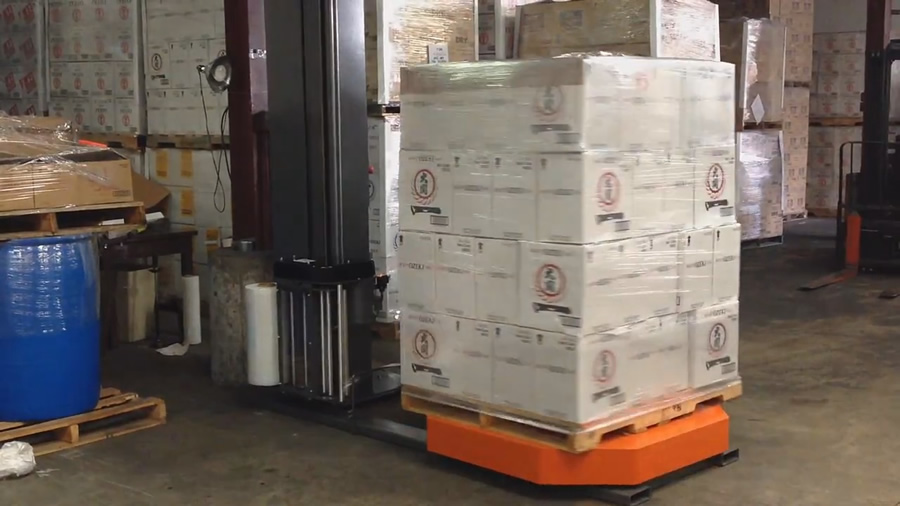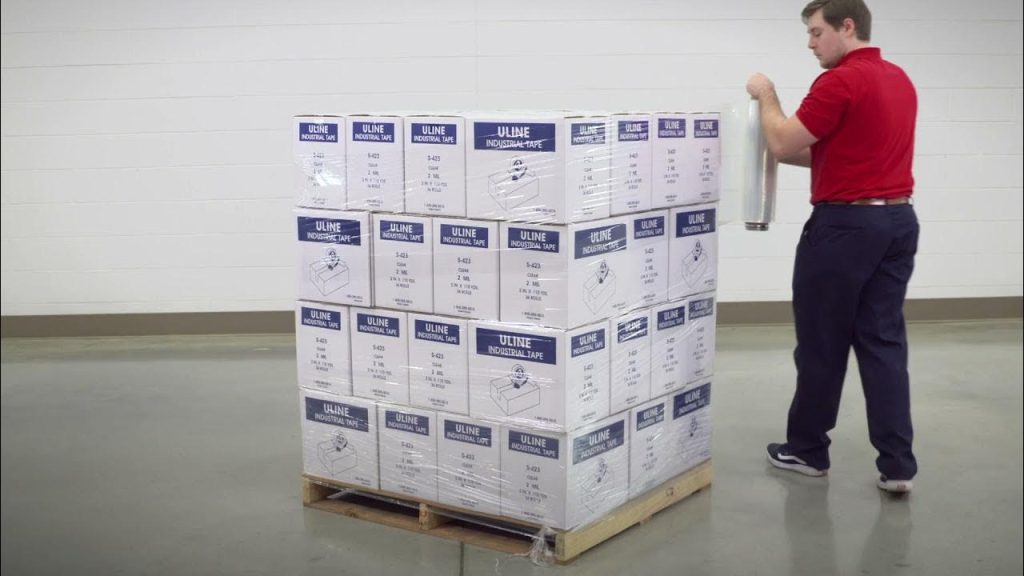Discover the Whats and Hows of Pallet Wrap Film
Pallets are the centrepiece of any storage or warehousing operation, holding a myriad of goods that we use on a daily basis. They’re simple to handle, can take heavy loads, keep all stacked items safe and secure, and the standard sizes mean they can be handled and moved with basic forklifts or pallet trucks quickly to where they’re needed.
Palletising goods, either in the same or different dimensions, is just one factor that ensures we as end users get all our orders delivered right on time and in perfect condition. One item that makes this possible is pallet wrap. This is the simple material that does exactly as it says on the box, that is, wraps everything loaded onto the pallet.

Also known as stretch wrap, stretch film, and shrink wrap, it’s the added layer of protection that keeps all goods free of damage, dry and clear of dust during storage or transportation. The wide variety of pallet wrap film ensures there’s a wrapping and packaging solution for just about anything that can be loaded onto a pallet.
So, What Exactly is Pallet Wrap?
Made from linear low-density polyethylene (LLDPE) and wound on a cardboard core, pallet wrap is a versatile, durable, and stretchable film that keeps palletised items tightly bound and waterproof. The wrap also nulls any risk of lost or damaged items during all phases of storage, shipping, or distribution. And it has proven as an effective deterrent against thieves or anyone intent on tampering with the loaded goods. The plastic wrapping comes in a variety of colours, widths, and thicknesses and depending on the manufacturing process, in two distinct types.
Cast Pallet Wrap
Cast pallet wrapping is made by cast extrusion, or continuously feeding heated polyethylene resin through a horizontal die and onto chilled rollers. Here it cools and solidifies. The final product is then cut to length into manageable rolls.
Cast extrusion allows for a pallet film wrap that exhibits high clarity, making palletised items visible, has good adhesion on both sides so it sticks easily, and unwinds off the roll quietly. Cast wrap also displays less stretch memory and is easy to tear making wrapping various items quicker. In addition, the casting process is cost-effective and reflected in the affordable end cost of the wrap.
Wrap applied by hand comes in rolls up to 520 metres long, whereas machine-applied rolls are understandably longer, with the longest reaching 1900 metres and adequate for large-scale operations. Thicknesses affect holding strength and tear resistance, and range from 17 microns (0.017mm) in general-purpose cast pallet wrapping, to 25-micron wrap used in heavy-duty applications.

Blown Pallet Wrap
Blown pallet wrap is made by blown extrusion, in which the LLDPE resin is fed through a vertical die, and then filled with air to form a thin polymer tube. As this makes its way through rollers, more air is used to cool the product, resulting in a one-layer pallet wrap film. The process is effective in making a wrap that is higher in strength and tear resistance than comparable cast film of the same thickness.
The film has higher stretch memory meaning better adhesion over the long term. It is also preferred in wrapping pallets with objects with sharp edges due to much better puncture resistance. In short, it is much tougher and will hold heavier loads for longer. The only downsides are that it is noisier when applied and is slightly more expensive than cast wrap in the same length and thickness.
Blown extrusion involves slower cooling and produces a pallet wrap film that is opaque. This gives it the upper edge when wrapping items that can spoil when exposed to light and UV radiation. Hand-applied blown pallet wrap comes in rolls up to 400 metres long, whereas machine-applied wrap is available in rolls of 1500 metres.
Hand or Machine Wrap? What do I Need?
Both cast and blown pallet wrap are offered as hand or machine-applied wrap. The differences are in the available lengths, with machine wrap being longer and generally reserved for businesses with larger load turnaround.
Machine wrap is also wider, at 500mm, whereas variants applied by hand are narrower, around 400mm, and intended to be used with a hand dispenser. If you’re wrapping dozens of pallets each day, then you’re well advised to invest in a semi or fully automatic pallet-wrapping machine and use the appropriate machine wrap.
Why Thickness Matters?
Cast and blown pallet wrapping can be optioned in different thicknesses and this in a large way determines the types of loads that can be wrapped. Wrap in thinner foils, at 17 microns, is used in general-purpose wrapping of regular and similarly-shaped items. Here thinner cast wrap is more than enough and will save any business a ton of cash over the long term.
Pallets loaded with some irregular boxes and objects can be wrapped in a slightly thicker cast or blown wrap. These are generally optioned in 20 to 23 microns. And lastly, pallets with irregular and boxes with sharp edges are often wrapped in thicker, 25-micron blown wrap. This ensures that all items stay put, due to the higher strength and tear resistance.

What About Wrap Colour?
Clear wrap is used where items need to be easily identified or scanned. It also makes for better pallet presentation. Black wrap is common with palletised items that need to be protected against UV rays and doesn’t draw unwanted attention. Both are sold in cast and blown variants.
Other Pallet Wrapping Options
Companies looking for more sustainable packaging products are well served with biodegradable pallet wrap. This retains the high strength and resistance to tearing of cast and blown wrap. Pallet netting is another common packaging product, used where air circulation is necessary to prevent loads from spoiling.
You’ll often see this in pallets loaded with food. Clear or black pallet top sheets are utilised alongside wrapping to keep all items clean and prevent theft. When packaging taller pallets loaded with large, irregular items, thicker pallet shrink tubing is applied with a heat gun to stabilise loads and remove excess moisture.